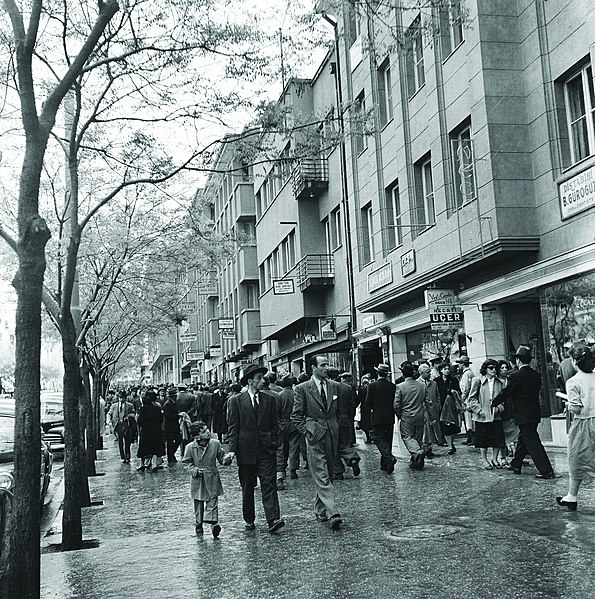Turkish nationalism is a political ideology that promotes and glorifies the Turkish people, as either national or ethnic definition. Turkish nationalism is associated with Turkification as a series of cultural and linguistic practices to promote the Turkish language and culture. It also has a complicated relationship with Muslim identity, Pan-Turkism, and Turanism.
Nationalistic personification of the Liberation of İzmir of 1922
An illustration depicting Atatürk's reforms. From right to left: The victory over the Greek invasion, the abandonment of the fez, the closure of the sectarian lodges, the adoption of the new Turkish alphabet, the adoption of the Turkish civil code.
A 5-lira banknote from the Atatürk era in Turkey. The grey wolf is a symbol of Turkish nationalism, as well as of Pan-Turkism.
Mehmet Emin Yurdakul, Turkish nationalist writer and politician; his writings and poems had a major impact on defining the term vatan ("Homeland" or "Motherland").
Turkish people or Turks are the largest Turkic people who speak various dialects of the Turkish language and form a majority in Turkey and Northern Cyprus. In addition, centuries-old ethnic Turkish communities still live across other former territories of the Ottoman Empire. Article 66 of the Turkish Constitution defines a Turk as anyone who is a citizen of Turkey. While the legal use of the term Turkish as it pertains to a citizen of Turkey is different from the term's ethnic definition, the majority of the Turkish population are of Turkish ethnicity. The vast majority of Turks are Muslims and follow the Sunni and Alevi faith.
The Sogdian trader An Jia (right) brokering an alliance with Turks (left). 579 CE, Tomb of An Jia, Xi’an, China.
West Thrace Republic, Turks in Kardzali
The loss of almost all Ottoman territories during the late 19th and early 20th centuries, and the establishment of the Republic of Turkey, in 1923, produced waves of Turkish refugees, who were known as "Muhacirs", who fled from hostile regions of the Balkans, the Black Sea, the Aegean islands, the island of Cyprus, the Sanjak of Alexandretta, the Middle East, and the Soviet Union to migrate to Anatolia and Eastern Thrace.
People on the Anafartalar Boulevard, Ankara in the 1950s








